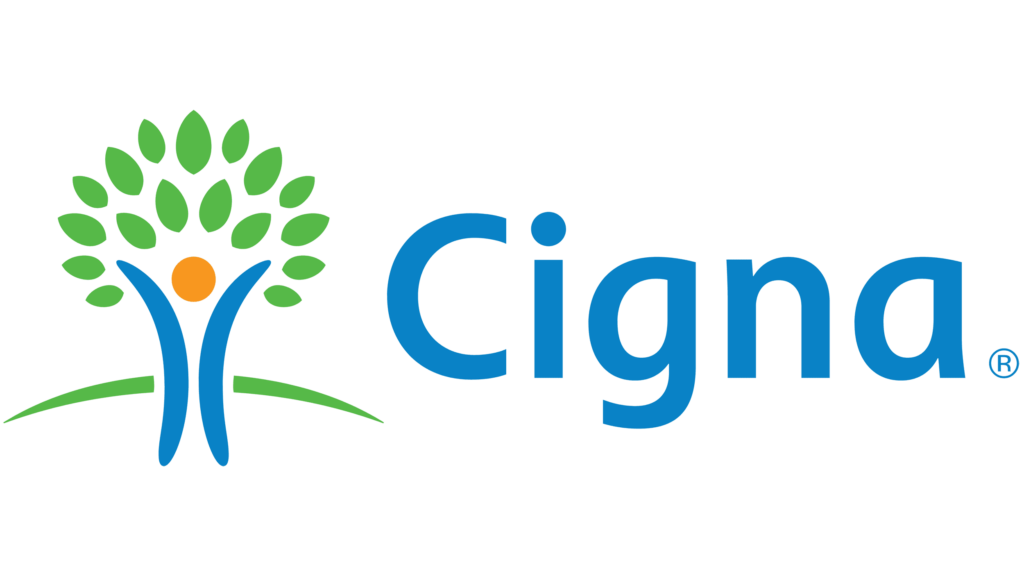Methamphetamine’s impact on the brain represents one of the most devastating examples of neurochemical hijacking in substance abuse. This synthetic stimulant doesn’t merely alter mood or energy levels—it rewires neural pathways, disrupts critical neurotransmitter systems, and triggers cascading damage across multiple brain regions. Understanding its effects requires examining both the immediate chemical chaos it creates and the progressive structural deterioration that follows.
Methamphetamine is a potent psychostimulant with a unique molecular structure that allows it to penetrate the blood-brain barrier rapidly. Unlike natural rewards that trigger gradual dopamine release, meth forces neurons to eject massive amounts of dopamine, serotonin, and norepinephrine simultaneously. This creates an intense but unsustainable “high” that depletes the brain’s chemical reserves and disrupts communication between key regions like the prefrontal cortex and limbic system.
The drug’s stimulation of the CNS goes beyond typical stimulants like caffeine or prescription ADHD medications. Meth binds to dopamine transporters, reversing their normal function and flooding synapses with 10–15 times more dopamine than natural rewards like food or sex. This overstimulation causes receptors to desensitize, blunting the brain’s ability to experience pleasure without the drug.
Norepinephrine disruption explains many physical effects:
Chronic use leads to dopaminergic system collapse, where the brain struggles to produce or regulate dopamine naturally. Post-acute withdrawal symptoms like anhedonia (inability to feel pleasure) and emotional numbness often persist for months.
The neurotransmitter chaos occurs in three destructive phases:
Glutamate excitotoxicity plays a critical role in neuronal death. Meth overactivates NMDA receptors, allowing excessive calcium influx that:
Neuroimaging studies reveal meth’s widespread impact, with users showing up to 11% reduced hippocampal volume and 8% smaller prefrontal cortices compared to non-users. These structural changes correlate strongly with observable cognitive and behavioral deficits.
Meth causes damage to several critical brain regions:
Hippocampus: Beyond memory loss, hippocampal atrophy impairs contextual learning and spatial navigation. Users may struggle to form new memories or recall recent events.
Prefrontal Cortex: Reduced gray matter here diminishes executive function, leading to:
Basal Ganglia & Limbic System: Meth’s “reward pathway” disruption causes reward deficiency syndrome, where natural motivators (relationships, career goals) lose their emotional weight.
Cerebellum: Damage to Purkinje cells results in ataxia (loss of muscle coordination) and dysmetria (difficulty judging distances).
Meth induces neurodegeneration through multiple overlapping mechanisms:
The white matter deterioration is particularly insidious. Myelin loss slows neural transmission speeds, causing:
Asana Recovery works with most PPO plans, covering up to 100%. See if your insurance can help fund your journey. Click below to get a free quote.

The long-term effects of meth on the brain can be devastating, leading to both structural and functional impairments. While some areas of the brain show partial recovery with prolonged abstinence, others may experience permanent damage. Methamphetamine use significantly reduces the density of dopamine transporters, even after 14 months of abstinence, leaving individuals with persistent motivational and cognitive challenges. The prefrontal cortex, which governs decision-making and impulse control, remains hypoactive in long-term users, correlating with ongoing struggles in self-regulation and an increased risk of relapse.
Meth use also inhibits hippocampal neurogenesis, reducing stem cell proliferation by up to 40% in chronic users. This impairment in neuroplasticity contributes to long-lasting memory deficits and cognitive dysfunction. Additionally, brain scans of meth users often show enlarged ventricles, which indicate tissue loss. This has led to the misconception that meth creates literal holes in the brain; while this isn’t accurate, the reality of widespread neural atrophy is just as concerning.
Cognitive and psychological effects of meth use are equally alarming. Individuals who have used meth for prolonged periods frequently experience deficits in working memory, reduced processing speed, and impaired emotional recognition. Many struggle with attention span issues and an inability to focus on complex tasks. Psychologically, meth users are prone to severe mood swings, anxiety, depression, and paranoia. Meth-induced psychosis is common in long-term users, with symptoms including hallucinations, delusions, and erratic behavior. One of the most distressing phenomena is formication, often referred to as “meth bugs,” where users experience a sensation of insects crawling under their skin, leading to compulsive scratching and self-inflicted wounds.
While some brain functions may recover over time, others remain permanently altered. The severity of the damage depends on various factors, including the duration and intensity of meth use, the presence of co-occurring mental health conditions, and the user’s age at first exposure. Recovery is possible, but it requires a sustained effort that includes abstinence, proper nutrition, cognitive therapy, and neurorehabilitation strategies.
Recovery timelines vary based on:
Meth addiction presents unique challenges due to the extensive damage it causes to the brain and nervous system. Effective treatment approaches must address both the physical and psychological impacts of prolonged meth use. Pharmacological interventions, such as bupropion—a dopamine and norepinephrine reuptake inhibitor—have shown promise in reducing cravings and withdrawal symptoms. Additionally, behavioral therapies like contingency management use incentive-based rewards to help recondition the brain’s reward system, counteracting meth-induced changes in motivation and impulse control.
Transcranial Magnetic Stimulation (TMS) has emerged as a non-invasive treatment option to help modulate activity in the prefrontal cortex, restoring cognitive function and impulse control. At Asana Recovery, we integrate multiple treatment modalities, including neurofeedback training to enhance frontal lobe regulation, amino acid therapy to replenish neurotransmitter precursors, and mindfulness-based relapse prevention strategies to strengthen cognitive resilience.
Early intervention is critical because each month of meth use accelerates brain aging by approximately 1.3 years. The longer someone uses meth, the more difficult it becomes to reverse the neurological damage. Seeking professional treatment can significantly improve outcomes, allowing individuals to regain cognitive function, emotional stability, and overall brain health. If you or a loved one is struggling with meth addiction, contact our specialists today to start the journey toward lasting recovery and neurological repair.
Overcoming meth addiction is challenging, but you don’t have to do it alone. At Asana Recovery, we provide comprehensive, evidence-based treatment to help you heal from meth’s devastating effects on the brain and body. Our personalized programs include medical detox, cognitive-behavioral therapy (CBT), neurorehabilitation, and holistic support to restore brain function and emotional well-being. Every day in treatment brings you closer to a healthier mind and a drug-free life. Take the first step—contact Asana Recovery today and reclaim your future.
We get it. Addiction recovery is tough. That’s why our programs are founded and staffed by people in recovery – people who truly understand.

Meth rapidly increases dopamine and serotonin levels, creating an intense feeling of euphoria. However, this overstimulation leads to dopamine depletion, causing extreme mood swings, anxiety, paranoia, and cognitive impairment even after the drug wears off.
Yes, methamphetamine use leads to neuronal death by triggering oxidative stress, neuroinflammation, and excitotoxicity. These processes destroy brain cells, particularly in the hippocampus, prefrontal cortex, and basal ganglia.
Long-term meth use causes white matter deterioration, reduced dopamine transporter density, and structural atrophy, leading to permanent cognitive and motor deficits. However, some functions may recover with sustained abstinence and treatment.
Recovery time varies based on the severity of use. Dopamine transporters may take up to 12-24 months to partially regenerate, while structural brain recovery depends on factors like age, overall health, and treatment.
Meth primarily affects the prefrontal cortex (decision-making and impulse control), the hippocampus (memory), and the basal ganglia (reward and motivation), leading to impaired cognitive function and increased addiction risk.
While some recovery is possible, certain changes in dopamine production, memory processing, and emotional regulation may be long-lasting. Therapy, exercise, and proper nutrition can aid in cognitive and emotional rehabilitation.
Common symptoms include memory loss, impaired concentration, difficulty making decisions, emotional instability, paranoia, and psychotic episodes. These effects worsen with prolonged meth use.
If you or a loved one is struggling with meth addiction, contact Asana Recovery today to begin a structured recovery program designed to support brain healing and long-term sobriety.
Take your first step towards lasting recovery. At Asana, we offer effective, insurance-covered treatment for addiction and mental health, guided by experts who understand because they’ve been there. Start your healing today.

This book has helped so many men and women; and we want to give it you for FREE. Get signed up today and discover how to unlock the grip of addiction and get back to living your best life.
In this book, you’ll discover…
— The Most Common Misconceptions About Addiction and Rehab
— Why Rock Bottom is a Myth and What You Can Do About It
–The Steps to Healing From Trauma, Both Mentally and Emotionally
–And much more!
© Copyright 2024 Asana Recovery™ | All Rights Reserved | Privacy Policy
You could save up to 100% of your treatment using your Insurance.





By submitting this form, you agree to Asana Recovery’s Privacy Policy. You also consent to Asana Recovery contacting you by phone, text message, and email regarding your insurance benefits and treatment services. You acknowledge that text messaging may involve risks, authorize the use of your Protected Health Information (PHI) for these communications, and understand you can opt-out of text messages at any time by replying “STOP”.
Asana Recovery
We firmly believe that the internet should be available and accessible to anyone, and are committed to providing a website that is accessible to the widest possible audience, regardless of circumstance and ability.
To fulfill this, we aim to adhere as strictly as possible to the World Wide Web Consortium’s (W3C) Web Content Accessibility Guidelines 2.1 (WCAG 2.1) at the AA level. These guidelines explain how to make web content accessible to people with a wide array of disabilities. Complying with those guidelines helps us ensure that the website is accessible to all people: blind people, people with motor impairments, visual impairment, cognitive disabilities, and more.
This website utilizes various technologies that are meant to make it as accessible as possible at all times. We utilize an accessibility interface that allows persons with specific disabilities to adjust the website’s UI (user interface) and design it to their personal needs.
Additionally, the website utilizes an AI-based application that runs in the background and optimizes its accessibility level constantly. This application remediates the website’s HTML, adapts Its functionality and behavior for screen-readers used by the blind users, and for keyboard functions used by individuals with motor impairments.
If you’ve found a malfunction or have ideas for improvement, we’ll be happy to hear from you. You can reach out to the website’s operators by using the following email
Our website implements the ARIA attributes (Accessible Rich Internet Applications) technique, alongside various different behavioral changes, to ensure blind users visiting with screen-readers are able to read, comprehend, and enjoy the website’s functions. As soon as a user with a screen-reader enters your site, they immediately receive a prompt to enter the Screen-Reader Profile so they can browse and operate your site effectively. Here’s how our website covers some of the most important screen-reader requirements, alongside console screenshots of code examples:
Screen-reader optimization: we run a background process that learns the website’s components from top to bottom, to ensure ongoing compliance even when updating the website. In this process, we provide screen-readers with meaningful data using the ARIA set of attributes. For example, we provide accurate form labels; descriptions for actionable icons (social media icons, search icons, cart icons, etc.); validation guidance for form inputs; element roles such as buttons, menus, modal dialogues (popups), and others. Additionally, the background process scans all the website’s images and provides an accurate and meaningful image-object-recognition-based description as an ALT (alternate text) tag for images that are not described. It will also extract texts that are embedded within the image, using an OCR (optical character recognition) technology. To turn on screen-reader adjustments at any time, users need only to press the Alt+1 keyboard combination. Screen-reader users also get automatic announcements to turn the Screen-reader mode on as soon as they enter the website.
These adjustments are compatible with all popular screen readers, including JAWS and NVDA.
Keyboard navigation optimization: The background process also adjusts the website’s HTML, and adds various behaviors using JavaScript code to make the website operable by the keyboard. This includes the ability to navigate the website using the Tab and Shift+Tab keys, operate dropdowns with the arrow keys, close them with Esc, trigger buttons and links using the Enter key, navigate between radio and checkbox elements using the arrow keys, and fill them in with the Spacebar or Enter key.Additionally, keyboard users will find quick-navigation and content-skip menus, available at any time by clicking Alt+1, or as the first elements of the site while navigating with the keyboard. The background process also handles triggered popups by moving the keyboard focus towards them as soon as they appear, and not allow the focus drift outside it.
Users can also use shortcuts such as “M” (menus), “H” (headings), “F” (forms), “B” (buttons), and “G” (graphics) to jump to specific elements.
We aim to support the widest array of browsers and assistive technologies as possible, so our users can choose the best fitting tools for them, with as few limitations as possible. Therefore, we have worked very hard to be able to support all major systems that comprise over 95% of the user market share including Google Chrome, Mozilla Firefox, Apple Safari, Opera and Microsoft Edge, JAWS and NVDA (screen readers).
Despite our very best efforts to allow anybody to adjust the website to their needs. There may still be pages or sections that are not fully accessible, are in the process of becoming accessible, or are lacking an adequate technological solution to make them accessible. Still, we are continually improving our accessibility, adding, updating and improving its options and features, and developing and adopting new technologies. All this is meant to reach the optimal level of accessibility, following technological advancements. For any assistance, please reach out to